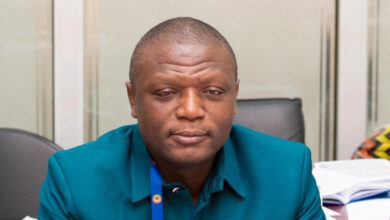Dr Theo Acheampong explains why the cedi’s recent appreciation is not solely due to external factors

Economist and Risk Analyst, Dr Theo Acheampong, has provided a detailed explanation as to why the cedi’s recent appreciation is not solely due to external factors.
In a Facebook post, he explains various factors culminating in the recent appreciation of the Ghana cedi.
The vice president of policy think tank ImaniAfrica mentions certain fiscal factors and monetary measures which has been put in place to get the cedi competing with other currencies.
Read His Post Below
𝐖𝐇𝐘 𝐓𝐇𝐄 𝐂𝐄𝐃𝐈’𝐒 𝐑𝐄𝐂𝐄𝐍𝐓 𝐀𝐏𝐏𝐑𝐄𝐂𝐈𝐀𝐓𝐈𝐎𝐍 𝐈𝐒 𝐍𝐎𝐓 𝐒𝐎𝐋𝐄𝐋𝐘 𝐃𝐔𝐄 𝐓𝐎 𝐄𝐗𝐓𝐄𝐑𝐍𝐀𝐋 𝐅𝐀𝐂𝐓𝐎𝐑𝐒
1. The 𝐔𝐒 𝐃𝐨𝐥𝐥𝐚𝐫 𝐈𝐧𝐝𝐞𝐱 (𝐃𝐗𝐘) measures the U.S. dollar’s value against a basket of six major currencies, namely Euro (EUR), Japanese Yen (JPY), British Pound (GBP), Canadian Dollar (CAD), Swedish Krona (SEK), and Swiss Franc (CHF). The index rises when the USD gains strength against the other currencies and falls when the dollar weakens. See https://www.bloomberg.com/quote/DXY:CUR
2. Since Jan 2025, the 𝐃𝐗𝐘 𝐡𝐚𝐬 𝐝𝐞𝐜𝐥𝐢𝐧𝐞𝐝 𝐦𝐨𝐝𝐞𝐬𝐭𝐥𝐲, indicating a slight weakening of the U.S. dollar against a basket of major currencies. In fact, since Liberation Day (April 2, 2025) to date, the DXY has decreased by 2.53 points, or approximately -2.46% over the period, reflecting the economic uncertainty over the period—- tariff wars. Further, most stock markets have course corrected from the initial early April shocks/downturn.
3. Conversely, the 𝐆𝐡𝐚𝐧𝐚 𝐂𝐞𝐝𝐢 𝐡𝐚𝐬 𝐬𝐭𝐫𝐞𝐧𝐠𝐭𝐡𝐞𝐧𝐞𝐝 [𝐚𝐩𝐩𝐫𝐞𝐜𝐢𝐚𝐭𝐞𝐝] against the US dollar by about 10% year to date or 17.57% from Liberation Day [April 02, 2025] to May 09, 2025. For emphasis, the cedi traded at GHS15.46 on April 02 and GHS13.15 on May 09.
4. The clear appreciation of the cedi to the dollar over the same period, and also when especially contrasted with the DXY, is indicative of the fact that l𝐨𝐜𝐚𝐥 𝐞𝐜𝐨𝐧𝐨𝐦𝐢𝐜 𝐟𝐚𝐜𝐭𝐨𝐫𝐬 [𝐬𝐭𝐫𝐨𝐧𝐠 𝐦𝐨𝐧𝐞𝐭𝐚𝐫𝐲 𝐚𝐧𝐝 𝐟𝐢𝐬𝐜𝐚𝐥 𝐩𝐨𝐥𝐢𝐜𝐲 𝐬𝐢𝐠𝐧𝐚𝐥𝐬] 𝐚𝐫𝐞 𝐥𝐚𝐫𝐠𝐞𝐥𝐲 𝐫𝐞𝐬𝐩𝐨𝐧𝐬𝐢𝐛𝐥𝐞 𝐟𝐨𝐫 𝐭𝐡𝐞 𝐜𝐞𝐝𝐢’𝐬 𝐚𝐩𝐩𝐫𝐞𝐜𝐢𝐚𝐭𝐢𝐨𝐧, independent of the broader performance of the U.S. dollar. So, what has happened over the past few weeks on the monetary and fiscal front? Let me list a few:
𝐅𝐢𝐬𝐜𝐚𝐥 𝐦𝐞𝐚𝐬𝐮𝐫𝐞𝐬:
a. 2025 Budget and ‘Shock Therapy’ Measures: In March 2025, Finance Minister Cassiel Ato Forson presented the 2025 budget, outlining significant spending cuts and the removal of certain taxes, including the Electronic Transaction Levy (E-Levy) and the COVID-19 levy.
b. IMF Program Review and Financial Support: Related to this, Ghana and IMF reached a staff-level agreement on the fourth review of the country’s $3 billion Extended Credit Facility program on April 15, 2025. Upon approval by the IMF Executive Board, this will unlock approximately $370 million in financing.
c. Positive Investor Sentiment: At a high-level meeting in Washington, D.C., investors appreciated Ghana’s improving revenue collection and control of spending. Check the country’s Eurobond spreads for confirmation.
d. Inflation Trends: Ghana’s consumer inflation rate has declined, reaching 21.2% year-on-year in April 2025, down from 22.4% in March. This marks the fourth consecutive month of disinflation, attributed to moderating food and non-food prices and the strengthening of the Ghanaian cedi.
𝐌𝐨𝐧𝐞𝐭𝐚𝐫𝐲 𝐦𝐞𝐚𝐬𝐮𝐫𝐞𝐬
a. The central bank 𝐩𝐨𝐬𝐬𝐢𝐛𝐥𝐲 𝐢𝐧𝐭𝐞𝐫𝐯𝐞𝐧𝐞𝐝 in the forex market by selling some of its gold and other forex reserves, improving inflows to support the cedi. The Bank of Ghana’s gold reserves reached a valuation of approximately GH₵46.3 billion [USD 3.6 billion] at the end of April 2025. See https://www.bog.gov.gh/…/2025/05/Ghana-Gold-Reserves.pdf. As you can see in the chart, the net month-on-month additions to the reserves have been lower from January-April 2025 than during 2023 and 2024. The central bank has reserves to continue defending the currency as and when needed, especially against potential speculative activity. The optimal gold reserve holding ratio is one interesting academic and policy research topic. Yes, kudos to the past NPP administration for taking proactive steps to shore up the central bank’s gold reserves. We must continue building reserves while being agile to intervene in the market when needed.
5. For those interested, you can go back over the past 5 to 10 years and do the same analysis, and you’ll realise that Point 4 is mainly true. For the geeks, you can run a 𝐭𝐢𝐦𝐞 𝐬𝐞𝐫𝐢𝐞𝐬 𝐦𝐨𝐝𝐞𝐥 with lagged effects of DXY and other external indicators, and you will come to a clear conclusion that market participants place more premium on the signals arising out of local economic factors [monetary and fiscal policies] — this is the most critical driver of the cedi’s volatility.





